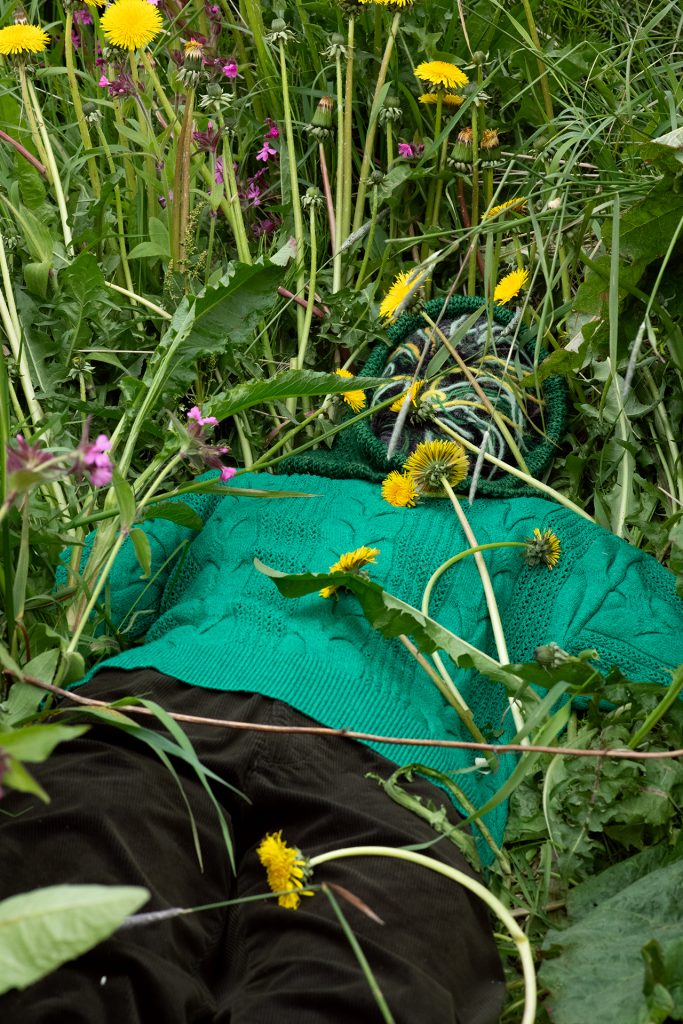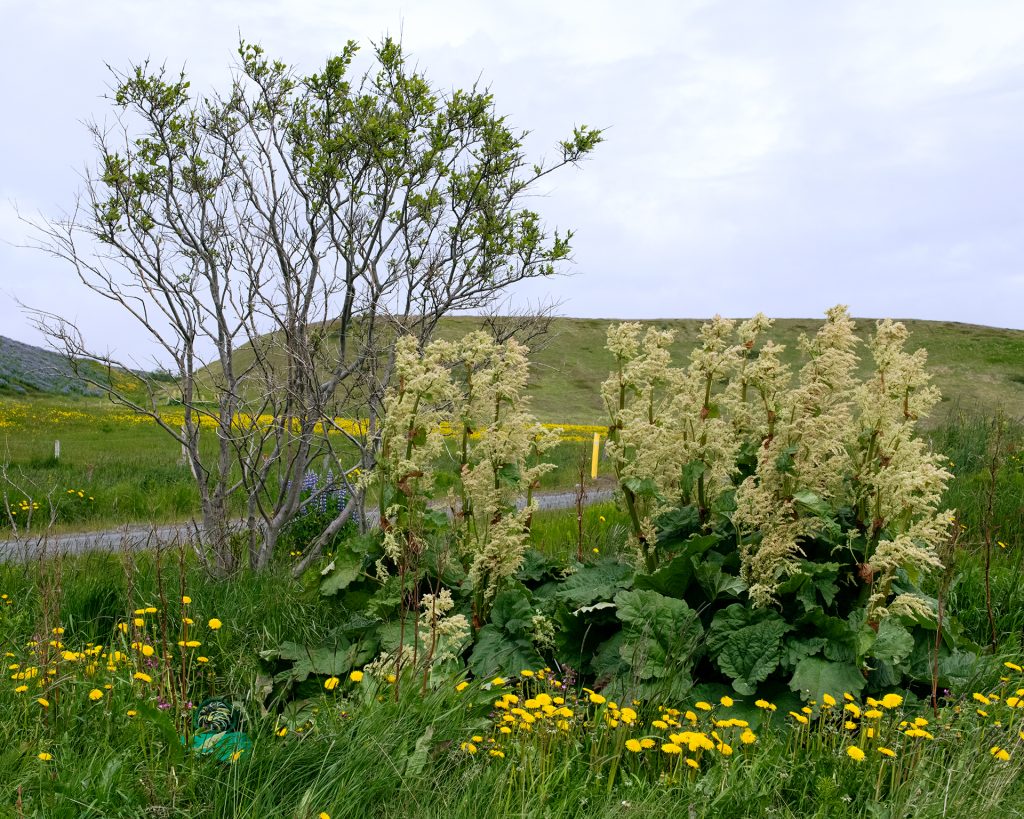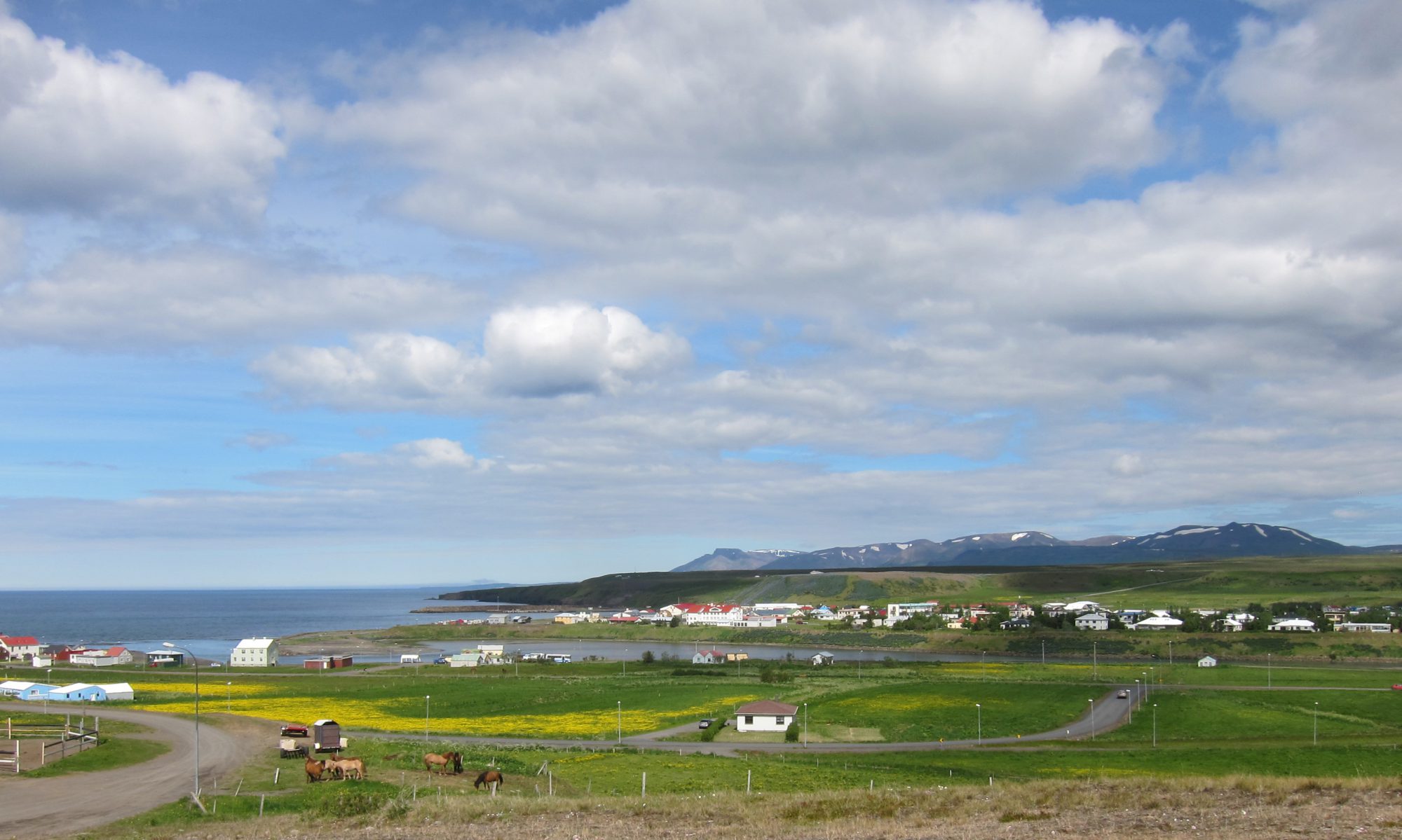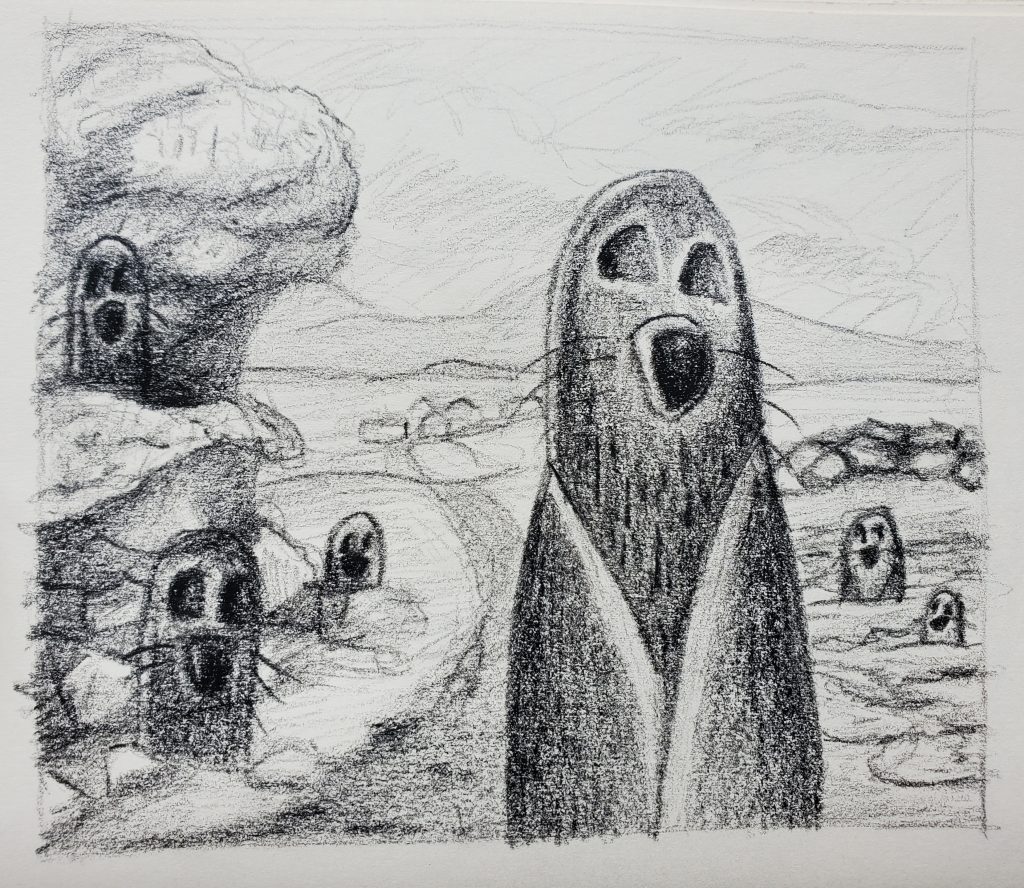For my personal project while undertaking this residency at the Icelandic Field School, I decided to make a mask. A hand crocheted mask that would allow the wearer to blend into the natural environment and blur the line between “figure” and “ground”. I returned to crochet for the first time since I was a teenager and painstakingly constructed its hooded shape out out of moss stitch (which I loved) and yarn over-slip-stitches (which I detested). I became obsessed with the repetition of the crochet hook. It was refreshing and rewarding to make something useful and wearable (I make paintings for the most part).
When it came to determining the design I would use within the central mask insert, I had dozens of ideas, varying from drawn tracings of wallpaper patterns found within the Kvennaskollin residence we were living within to piecing together an image of the surrounding Bloundos landscape out of scrap fabric. But when our professor Kathleen Vaughan suggested I think about working with the image of grass, the project started to shift. What about creating a mask that would allow the wearer to attempt to camouflage into the grass?
On numerous hikes through the surrounding area with my cohort we had instinctively laid down in the grass, it’s tall tendrils inviting us to be held as well as briefly escape the biting wind at a cliff’s edge. What about creating a mask that would invite the wearer to take this comfort and moment of communing in whatever grass they might find around them? I decided to felt together a loosely interpreted image of grass to fit inside the face hole of the hood, using Icelandic lopi wool and yarn, and miscellaneous fibres.
When I started this project I was mainly thinking about the photographs I would take of myself or others wearing the mask once it was done. But in constructing the mask, putting it on and being inside it and the sensory deprivation it creates; in seeing and photographing others wearing it while also wearing my clothes, I have realized that this project is not just about constructing an image but sharing the act of wearing it.
I titled the project “How to be no one” because this mask invites the wearer to enter a state of positive self-effacement. However, the project is also stronger when multiple people don the mask because it underscores that anyone (and therefore no one) could be inside. Instead of donning a mask and becoming a character, you become something eternal (grass).
Our group exhibition opens tomorrow and I plan to invite visitors to wear the mask and lie in the grass. Hopefully some people will go for it and try to become grass….




